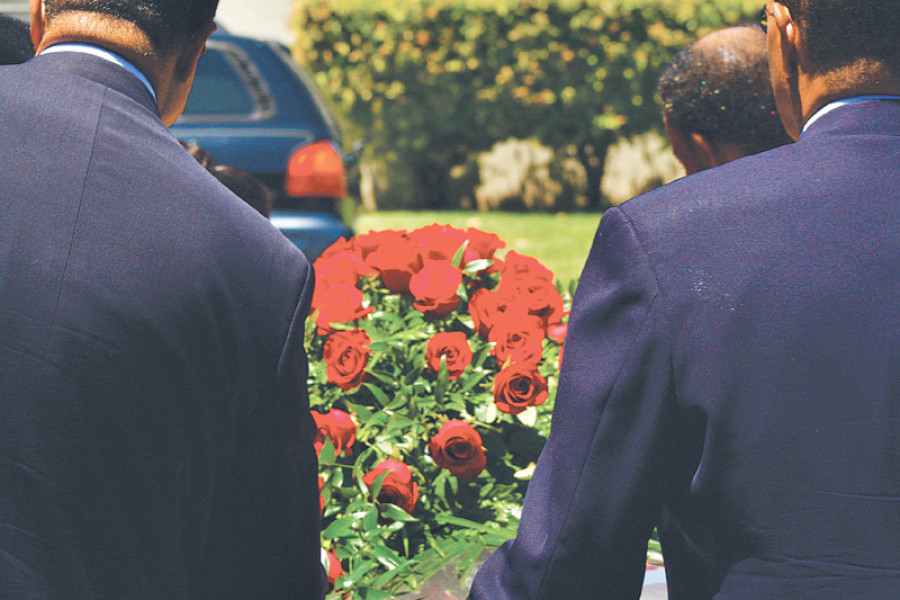Entertainment
Staying true to our roots
Sanskrit is an orthodox subject of feudalist Brahmans” is what I remember from my memory of class two.
Sanjay Adhikari
Sanskrit is an orthodox subject of feudalist Brahmans” is what I remember from my memory of class two. The school I studied in trusted these words and dropped Sanskrit as a subject. These words left a great mark on my mind. I thought wearing a coat, a pair of pants, speaking in English, and using a fork and spoon would make me modern. I hallucinated that I was modern, but this hallucination ended during my A-levels, when I found out that 14 universities in Germany were teaching Sanskrit for developing the modern mind. What we threw away, calling a feudal orthodox subject, was a tool for modernity and development for them.
A few weeks ago, the Pashupati Area Development Trust (PADT) introduced electric cremation as a symbol of modernity and development. PADT claims there is no difference between the traditional cremation process and the modern electric cremation process from a Dharma perspective, and that it is more beneficial economically and environmentally. Is the modern PADT modern enough to analyse the value of the traditional cremation process from a sociological perspective?
Any action has both costs and benefits, but the benefits should exceed the costs. If we look at the benefits of the PADT electric cremation process, then yes, it is a great step for environmental conservation. As claimed by PADT, nearly 300 kg wood is needed to cremate a body on a pyre which will be conserved once the electric cremation process is brought into practice. It seems by their statement that electric cremation is a great achievement for environment conservation. But to critically analyse the situation, will those trees that were used for burning be conserved for fresh oxygen, or will they be used for something else entirely? Say to make luxury furniture? If the trees will be conserved and the resources are not allocated somewhere else for luxury, it is a great step for change as future generations will enjoy a greener Nepal.
Likewise, a lot of environmental activists believe that the remaining wood after the pyre burns out is a cause of pollution in the Bagmati river, and that electric cremation will decrease the pollution. Again critically analysing, is the wood remaining after traditional cremation polluting the Bagmati river or the sewage from houses around? Let us also consider this as an advantage of electric cremation that water pollution will decrease in general. Similarly, PADT claims, cremating a body on a pyre costs around Rs 7,000, but cremating a body in electric crematorium is much cheaper, around Rs 3,000. They are also providing free cremation to economically challenged people. The economic benefit people will be getting from electric cremation and a step towards environmental conservation is appreciable if we see superficially what PADT is trying to show.
PADT is only seeing what it wants to see in order to prove itself correct but they are not seeing it from the sociological perspective. Malinowski, a sociologist, anthropologist and ethnographer in his work Argonauts of the Western Pacific writes about the practice of Kula ring exchange. By studying his work, Kula ring exchange can be defined as a practice done by tribes of Milne Bay Province of Papua New Guinea, which spans 18 island communities where participants travel hundreds of miles by canoe in order to exchange Kula valuables consisting of red shell-disc necklaces (veigun or soulava) that are traded to the north (circling the ring in clockwise direction), and white shell armbands (mwali) that are traded in the southern direction (circling counter-clockwise). If the opening gift is an armshell, then the closing gift must be a necklace and vice versa. The exchange of Kula valuables is also accompanied by the trade of other items known as gimwali (barter). Malisnowski critically argues, “Why would men risk life and limb to travel across huge expanses of dangerous ocean to give away what appear to be worthless trinkets?” His question gives birth to an analysis that the Kula ring seems to be a simple traditional process for the people of the tribes, but in reality, it has a huge social significance—it welds together a considerable number of tribes. It won’t be debatable to say from his work that a traditional function of a tribe is as complex, rational and practical as of modern society practices in order to bind their people into one community. Every society is unique and functions differently to bring people into common consciousness.
By the same token, the tradition of cremation is seen as just burning the dead by PADT like the tribal people of Papua New Guinea with regard to the Kula ring are simply engaging in it as a practice but not as a tool of social unity.
For most people, every practice of ours is barbarian, irrational and has no value. We need to come out of inferior complex and leave this mentality, or else we will fall for the same trap of individualism. By disregarding our traditions and way of society, we will fall in the trap of the west creating a society of individualism. Let’s stop individualism before every social institution gets fragmented and we create a fragmented society of an individual.
Adhikari is currently a student at Kathmandu School of Law




 7.12°C Kathmandu
7.12°C Kathmandu










